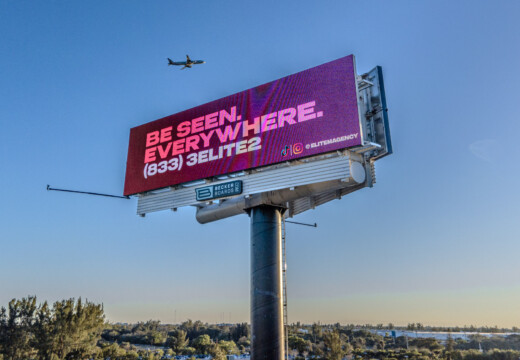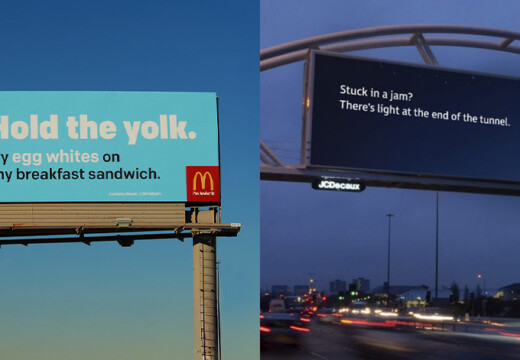TL;DR
CPM & QI
CPM is a very important metric in budget planning as it tells you the cost of the impressions you’ll deliver to your audience. Because it is so important, we want to discuss the second half of the picture: what’s happening with all those impressions?
Of the bulk impressions you’re delivering to a particular geography, how many individual people are actually seeing your ad, and how many times?
This is the question answered by the Qualified Impression (QI) metric, which will tell you how many repeat times your ad has been seen by individual people.
Not only does Blip offer an extremely competitive (if not the lowest!) CPM for OOH, they can also use QI to inform you how many people have seen your ads once, twice, three times, and so on…
Let’s learn more.
One of the most critical things to consider in advertising is how many ad impressions you need before your customers are ready to make a purchasing decision. That’s where qualified impressions (QI), Blip’s very own ad metric, comes into play.
Ad impressions are typically measured with the CPM rate. But when it comes to digital out-of-home (DOOH) advertising, CPM is an insufficient and outdated metric, as it doesn’t inform you enough to take the next step of pushing potential customers further down the sales funnel, or for them to finally make a purchase.
This article explains the CPM metric and how it lacks in educating advertisers on whether the viewers of their ads are ready to purchase. It also explains our own metric for ad impressions known as Qualified Impressions, and why it is a must to consider as you nurture your customer base.
What is CPM
An acronym for cost per mille (Latin for thousands), CPM represents the average cost per one thousand impressions that advertisers pay on a digital platform such as Google Ads. This metric reveals the average amount a company pays for every thousand times internet users see their ad.
Hosts and publishers of advertising platforms are paid the CPM for impressions alone, not for clicks or conversions.
The CPM metric is typically used in campaigns that are built to be viewed by thousands of people.
CPM is also often used in comparison with other advertising metrics, such as CPC (Cost per Click) or CPA (Cost per Action), as it allows advertisers to get a more precise understanding of the efficiency of different advertising campaigns and channels.
You can calculate the CPM using the following formula:
CPM = (total cost of online advertising ÷ total number of impressions) × 1000
For example, if your ad campaign costs you $500 for 100,000 impressions, your CPM would be $5.

Companies couple CPM and its associated strategies, with brand awareness ad campaigns focused on raising recognition of their product and/or brand.
However, this metric is not ideal for all marketers. It is especially lacking when it comes to expressing its viewers’ intent and understanding how they feel about your company.
How CPM is an Insufficient Metric for Understanding Ad Impressions
Although CPM is a standard metric in digital marketing and advertising, it has many disadvantages that make it insufficient when it comes to understanding your ad impressions and other aspects of your campaign.
First off, an impression made online is difficult to assess, as it is counted any time the platform hosting the ad determines that the ad has been viewed by its standards. Given that there are so many elements in a webpage, users’ attention may never even fall on the ad.
Additionally, CPM strategies tend to be targeted and not ideal for smaller, niche companies that look to appeal to a small subset of a population. You also never know where on a platform an ad may be positioned, so its impressions may not be accurate if it’s in a spot no one looks at.
Last but not least, CPM does not relay information about user intent and buying readiness. It tells you how much you’re paying per one thousand impressions, which is useful for keeping track of your marketing budget, but tells you little else.
That’s because when a viewer of an ad sees an ad just once, they are statistically unlikely to buy from your brand, make a purchase decision, or even engage with your brand. Instead, as most marketing institutions declare, your potential customers must see your ad at least 7 times to make a purchase.
This is why, at Blip, we created the QI metric, as it informs you that your ad is being delivered to someone who is (statistically) ready to purchase. This also explains why those with a smaller amount of impressions are not considered to be qualified impressions. (More on this in the sections below).

What are Qualified Impressions
QI, or qualified impressions, are impressions delivered to buyers who are ready to purchase. Remember, buyers need to know something and feel something before they are ready to choose you, and that usually doesn’t happen until they have had multiple meaningful touchpoints with your brand.
So which impressions are considered Qualified Impressions?
- 1-3 impressions – not QI; these early impressions start to establish credibility and build trust
- 4-5 impressions – not QI, but is ready to be nurtured with other marketing efforts (content, emails, social ads)
- 6+ impressions – qualified impressions, because the people who have seen your ad this number of times are (statistically) close to making a buying decision
Only 6 impressions and above are considered qualified impressions, as by the sixth impression, viewers have an accurate and familiar sense of what your company offers, which can include its highlights and unique selling points.
How do we determine when Qualified Impressions are being delivered?
With six impressions needed to be considered a QI, how exactly do we calculate this? How do we know that people have indeed seen an ad 6 times? While there is no way to ensure that a single person has seen an ad 6 times, the QI is determined as a statistical result based on local data on the movement of people near a billboard, coupled with our data from your ad campaign.
We determine it by assessing the odds of a certain population passing by a specific ad in a specific part of town, within a certain period of time. We aggregate this information from Geopath, a nonprofit government organization that measures and analyzes audience location and consumer engagement with out-of-home (OOH) advertising.
The Geopath data we use to make this calculation involves population statistics, a count of how many times cars drive by a billboard and how many pedestrians pass by it daily. Luckily, this data is more accurate than the data on online ad viewers, as those who are physically driving a car are not bots.
We couple this key data from Geopath with our own data from our advertisers and media owner partners, which includes the following:
- How many times an ad is displayed at a particular location
- How many times it plays during the day, hour, and a set amount of minutes
- How many days in a row it plays
- The dwell time of the ad
In consolidation of all of this data, we accurately determine the odds of certain populations seeing an ad x number of times and whether it is high or low, determining how many total impressions are considered qualified.
Why are Qualified Impressions So Important
QI is incredibly important because, unlike CPM, it serves as the determining factor of whether your ad viewers are ready to take action, or at the very least, learn more and be nurtured further.
A higher QI score dictates that your ad viewers are becoming more qualified to buy from you. By understanding which segments of the population are not ready to buy from you, the QI saves you an immense amount of wasted time, effort and money.
After all, why would you allocate your marketing efforts and budget to an audience that is barely nurtured, let alone sold on your product or service?
Where the QI truly benefits your advertising campaigns is that it allows you to allocate your advertising spend in a way that’s more conducive to the success of your ads. This is because it reveals where certain populations and groups are in their buyer journey with your business. With this key information in tow, you can allot your advertising funds accordingly.
Information relating to QI is also super useful, even when your viewers have under six impressions. This is because it allows you to form strategies that are best tailored to nurture each group based on their impression count, as each group represents customers in a different stage of the buyer journey.
As such, QI allows you to help your audience learn more about you and how to feel about your brand, which pushes them further down the sales funnel and aids them in making a purchase.
The most efficient way to generate Qualified Impressions
Don’t fret if certain viewers of your ad haven’t had the eligible amount of impressions to be considered a QI group. You can still nurture them toward QIs and convert them to buying.
- 1-3 impressions
- Continue running your billboard ads for extended periods of time to move this group to a higher impression status.
- You should also conduct research on what appeals to them the most and how to best address their pain points and needs.
- 4-5 impressions
- Aside from continuing to run ads with this group, you can introduce other marketing campaigns and nurture programs, such as content campaigns, emails, social media posts and other ads in different formats, such as Facebook and Google Ads.
- QI (6+ impressions)
- You can begin pausing your billboard ads if you so choose. Ideally, the more impressions you land, the more familiarity and feelings your audience develops.
- Since QI ad viewers are most likely to buy from you, using CTAs in your marketing campaigns is now far more effective.
Making the Most of QI and Blip
Wrapping things up, you should remember that no one is going to buy from your brand if they’ve encountered your messaging only once. In fact, they are unlikely to buy from you until they are QI (have had at least 6 impressions with your ad).
That’s because to make a purchase, most customers need to know and feel something about your brand and its products first. This raises the following questions:
- How many touchpoints does somebody need to know and to feel something about a brand?
- How can advertisers most efficiently and cost-effectively deliver on these requirements?
Blip Billboards is the answer to these questions. With Blip, you don’t have to surpass your marketing budget and can allocate digital billboards in appropriate places along the buyer’s journey. Start with affordable billboards, to place your brand in your customers’ minds with credibility and authority for their first few impressions along the journey.
Secondly, keep your billboard ads running to have your desired demographics and populations continue to develop toward QI status. Once your ad viewers are better acquainted with your brand, i.e., when they reach an impression count of at least 3, you can start to incorporate other marketing strategies to further nurture them.
At this point, use a multichannel approach that consists of digital billboards and other forms of marketing so that your brand is fully embedded within your customers’ minds in such a way that they develop some feelings about it. Since QI customers are in the later stage in buyer journey, you can leverage CTAs so as to prompt purchases to a well-nurtured audience.
As such, the QI is the most effective metric to study to deploy an ad budget as you reserve your most expensive advertising methods as late as possible in the buyer’s journey, thus appealing to customers who are ready to buy.
Without considering who receives your Qualified Impressions, you’re just guessing and hoping.


